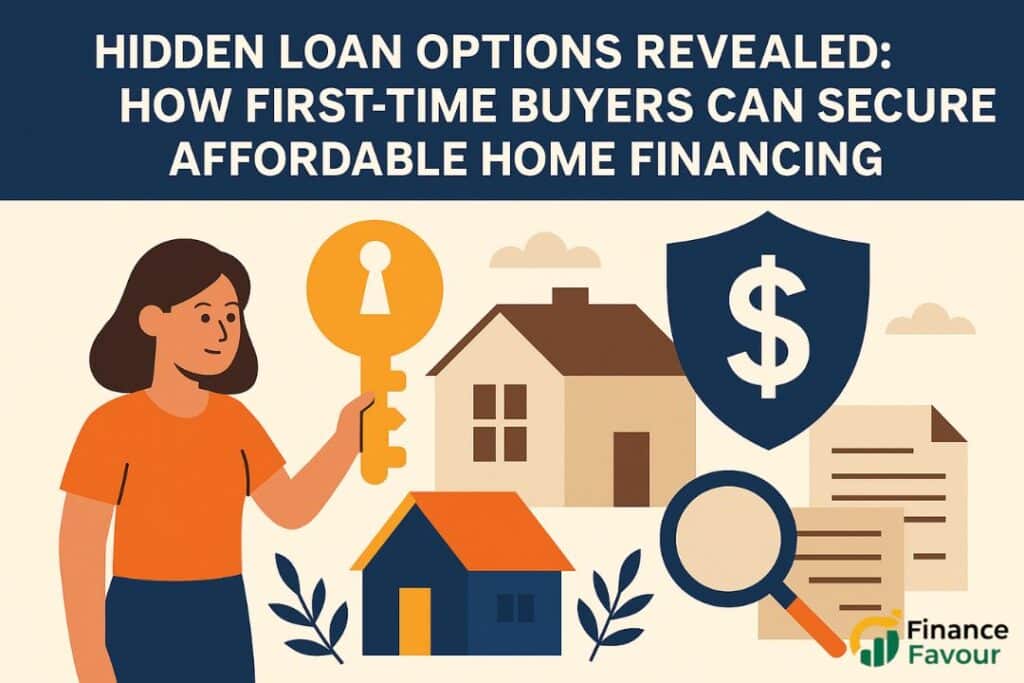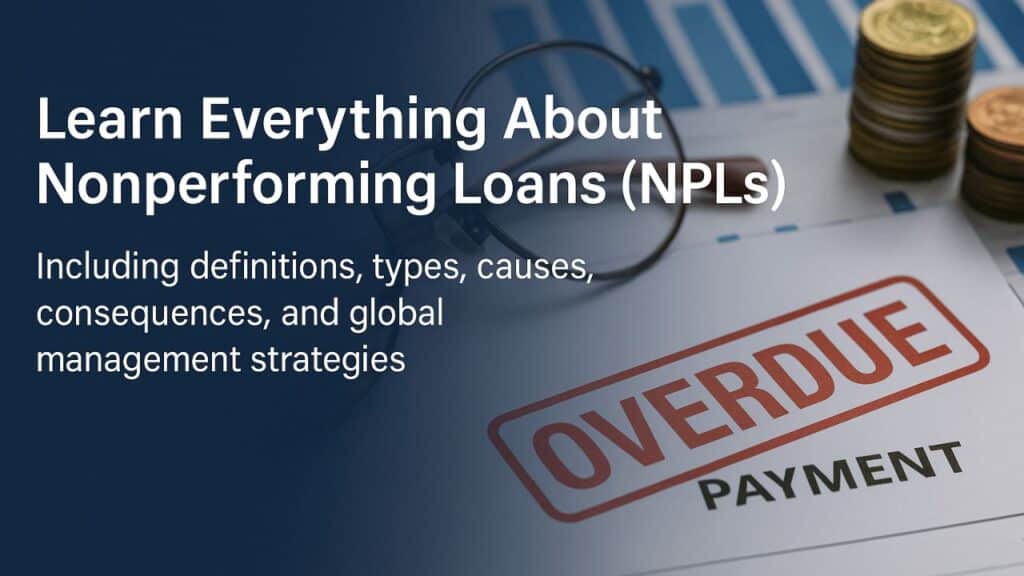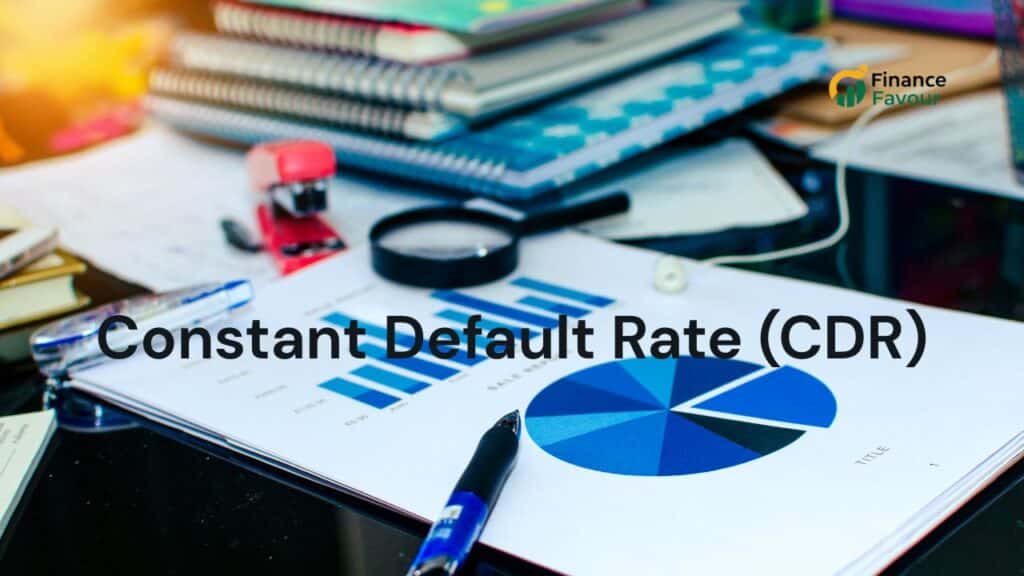Investors love leverage. It’s how you multiply gains without multiplying your upfront cash. That’s why the idea of a “10% down DSCR loan” sounds like music to any investor’s ears. Imagine picking up a rental or commercial property, only needing to cough up 10% of the purchase price, and having the rest funded—based purely on the property’s income. But here’s the catch: while it can happen, it’s not common, and it’s definitely not easy.
In this article, we’ll break down what a 10% down DSCR loan really is, why it’s rare, how it compares to standard lending, and most importantly—how you might actually pull it off. Whether you’re a seasoned investor or just breaking into the market, understanding these loans can help you scale faster and smarter.
What is a DSCR Loan?
Breaking Down the Debt Service Coverage Ratio
The DSCR—Debt Service Coverage Ratio—is the secret sauce behind these loans. It’s a formula lenders use to determine whether a property generates enough income to pay for its debt obligations. The calculation is simple:
DSCR = Net Operating Income (NOI) / Debt Payments
If your property earns $8,000/month and your loan payment is $6,000/month, your DSCR is 1.33. That tells lenders your property earns $1.33 for every dollar you owe. Lenders typically want this ratio to be at least 1.25 to approve a loan, especially if you’re asking for a smaller down payment.
Why DSCR Loans Are Popular Among Investors
DSCR loans became a favorite tool for real estate investors for one big reason—they don’t rely on your personal income. Unlike traditional loans that require tax returns, W2s, or employment verification, DSCR loans judge the property, not the person.
This opens up opportunities for:
- Self-employed individuals
- Investors with multiple properties
- Entrepreneurs without “traditional” income
If the numbers make sense on the deal, lenders are willing to write the check. That’s a game-changer for anyone building a rental empire.
Understanding the “10% Down” Concept
What It Means in the World of DSCR Loans
Most DSCR lenders require a minimum down payment of 20% to 25%. Why? Because these loans already carry higher risk. The borrower isn’t personally guaranteeing the loan in most cases, and lenders are banking on the property’s cash flow. That’s why they want you to have more skin in the game.
A 10% down DSCR loan flips that standard. It means you’re borrowing 90% of the property’s value—a bold move for most lenders unless everything else in the deal is airtight: strong DSCR, top-tier credit, solid location, and a proven borrower.
Why It’s So Rare Yet In-Demand
Let’s be honest—who wouldn’t want to put less money down? Lower down payments mean:
- Faster scaling
- Higher leverage
- Less personal capital tied up
But lenders aren’t eager to fund nearly the whole purchase unless the deal’s risk is minimal. That’s why you’ll only find these 10% down loans offered by niche DSCR lenders or through special programs—not your average bank or mortgage company.
Are 10% Down DSCR Loans Realistic?
Typical DSCR Loan Requirements
Here’s what most investors face when applying for a standard DSCR loan:
- 20–30% down payment
- Minimum DSCR of 1.25
- Credit score of 660 or higher
- Solid rental history or leases in place
- Stable property in a desirable location
These are non-owner-occupied loans, so lenders take no chances. If you can only put down 10%, you’re breaking the mold—and lenders will want everything else to be bulletproof.
Situations Where 10% Down May Be Possible
There are scenarios where 10% down DSCR loans get approved:
- Experienced investor with a large portfolio
- Property has DSCR of 1.5 or higher
- Excellent credit (700+ FICO)
- Low-risk property type (multifamily, long-term tenants)
- Lender offers “lite-doc” or aggressive loan products
In these rare cases, lenders may stretch to 90% LTV (loan-to-value). But expect higher interest rates and stricter loan terms to compensate for the risk.
Pros and Cons of a 10% Down DSCR Loan
Advantages for Investors
- Less capital required: You can keep your cash for other deals, renovations, or reserves.
- Faster portfolio growth: With only 10% down, you could buy 2–3 properties instead of one.
- Higher returns: More leverage can mean higher cash-on-cash returns (if the property performs well).
- Access to bigger properties: You may qualify for deals that would be out of reach with 25–30% down.
The Risks You Should Consider
- Higher interest rates: More risk for the lender = more cost for you.
- Lower equity cushion: If values drop or income dips, you’re more exposed.
- Tighter loan terms: You may face shorter loan durations, higher fees, or balloon payments.
- Harder to refinance: If the market shifts or your DSCR weakens, you could be stuck with bad terms or forced to sell.
That’s why it’s crucial to run your numbers conservatively and always have a backup plan if the property underperforms.
What Lenders Require for Low Down Payment DSCR Loans
Credit Score Expectations
If you’re aiming for a DSCR loan with just 10% down, your credit score can make or break the deal. While most standard DSCR loans accept credit scores as low as 660, a 10% down loan typically demands a minimum FICO of 700–720. Why? Because the lender is already taking on more risk by financing 90% of the property. They want assurance that you’re financially responsible and have a strong track record.
In some cases, private or portfolio lenders might bend slightly on credit, but you’ll likely face a premium in your interest rate. Bottom line—if you’re going in light on the down payment, make sure your credit is rock solid.
Property Cash Flow Requirements
DSCR is all about cash flow. If you want to borrow with a low down payment, the property must show a strong ability to cover the debt. That usually means a DSCR ratio of at least 1.3 to 1.5. Anything below that, and lenders may hesitate—or ask you to bring more money to the table.
To get there, you need a healthy Net Operating Income (NOI). That means:
- High rental income relative to the property price
- Low operating expenses
- Stable occupancy
Properties that are fully rented with long-term tenants are ideal. If there’s room to raise rents or reduce expenses, get that in place before applying—it could make all the difference.
LTV and DSCR Minimums
Loan-to-Value (LTV) is a key metric in lending. The higher the LTV, the lower your down payment. With DSCR loans, most lenders cap the LTV at 70–80%. That means you’ll usually need to bring 20–30% down.
To qualify for a 90% LTV (aka 10% down), the stars need to align:
- Excellent DSCR (1.4 or better)
- Prime property and location
- High borrower credit and experience
Some aggressive lenders may approve it—but they’ll charge more and likely place tighter terms to mitigate risk. Expect loan fees, prepayment penalties, or interest-only structures in exchange for that leverage.
How to Qualify for a 10% Down DSCR Loan
Building a Strong Borrower Profile
Even though DSCR loans don’t rely heavily on personal income, your profile still matters. To be considered for a 10% down DSCR loan, build a strong financial resume:
- Maintain a 700+ credit score
- Show real estate experience
- Keep personal debts low (even if not used in underwriting)
- Have liquidity—lenders like to see reserves in case things go south
If you’re a first-time investor, a 10% down DSCR loan might be tough to land unless your other financials are pristine and you’re buying a slam-dunk property.
Choosing the Right Property
Not all properties qualify for a low down payment. Here’s what lenders want:
- Stabilized income: No major vacancies or short-term leases.
- Low expense ratios: Keep those utilities, management, and repair costs in check.
- Market demand: Properties in high-demand neighborhoods rent faster and hold value better.
Multifamily units and long-term rentals are favorites because of their reliability. Vacation rentals and niche commercial assets can work, but you’ll need to show strong historical income and occupancy data.
Working With the Right Lender
You won’t find 10% down DSCR loans at most big banks. These are usually offered by:
- Private lenders
- Hard money lenders with DSCR overlays
- Portfolio lenders specializing in investor loans
Start by networking in real estate investor circles. Ask about lenders they’ve used for low down deals. Look for terms like “90% LTV,” “DSCR investment loan,” or “lite-doc rental loan” in lender marketing.
Make sure to vet your lender:
- Ask for references
- Compare terms (rate, fees, prepayment penalties)
- Read the fine print (balloon clauses, adjustable rates)
A good lender will also help you structure your deal to hit the right DSCR numbers, ensuring your deal flies through underwriting.
Alternative Strategies to Reduce Down Payment
Using Seller Financing
One creative strategy to reduce your out-of-pocket costs is seller financing. In this scenario, the seller acts as the bank for part of the deal. For example:
- You get a DSCR loan for 75% of the purchase price
- The seller holds a second mortgage for 15%
- You only bring 10% to closing
This strategy requires a willing seller, but in slow markets or for unique properties, it’s totally possible. Just make sure the lender allows secondary financing—some do, some don’t.
Partnering with Investors or Equity Shares
Another option? Bring in a capital partner. If you have the experience but lack the cash, team up with someone who’s cash-rich but time-poor. Offer equity or preferred returns in exchange for their contribution.
For example, your partner provides the down payment, and you handle management. You split profits 50/50 or offer a preferred return until they get their money back.
These partnerships can unlock larger deals and scale your growth—just be sure to paper the agreement professionally.
Exploring Gift Funds or Grants
Some lenders allow you to use gift funds from family or friends as your down payment—though it’s rare in DSCR loans. If you can document the source and show it’s a true gift (not a hidden loan), it could help you bridge the down payment gap.
There are also local grant programs or incentives for purchasing investment property in certain redevelopment areas. These aren’t common, but it’s worth checking with your local economic development office.
Common Pitfalls to Avoid
Overleveraging
The biggest risk with a 10% down DSCR loan? Overleveraging. If the property underperforms or values dip, you could be left underwater. With minimal equity, your options to refinance or sell are limited.
Don’t let the low down payment tempt you into buying a marginal deal. Stick to strong income-generating properties and leave room in your cash flow for surprises.
Misunderstanding DSCR Calculations
Too many borrowers inflate their expected rent or underestimate expenses. That’s a recipe for DSCR failure. Remember, lenders calculate DSCR based on actual rents and verified expenses. If your deal looks shaky on paper, it won’t get approved.
Before applying, work with a broker or financial advisor to run the numbers conservatively. If you’re borderline, improve income or cut costs before you submit.
Falling for Unrealistic Promises
Some lenders advertise “10% down DSCR loans” to reel in attention—but hide the full picture. Read the fine print. Ask for a written quote. If the rate is sky-high or the fees are absurd, you’re not getting a good deal.
Also, beware of lenders who skip documentation entirely. Responsible DSCR lenders still verify leases, income, and appraisals. If it feels too easy, it might be too good to be true.
The Role of DSCR in Portfolio Growth
Scaling with Minimal Capital
One of the biggest advantages of DSCR loans—especially with a low down payment—is the ability to scale fast. Traditional mortgages often limit how many properties you can finance. DSCR loans don’t. If your properties generate solid cash flow and meet the DSCR threshold, you can keep stacking properties in your portfolio.
With just 10% down, the capital you’d normally use for one property could now buy two or even three. That’s a huge accelerator for investors looking to scale aggressively. For example:
- $100,000 in cash with 25% down = $400,000 in real estate.
- $100,000 in cash with 10% down = $1,000,000 in real estate.
Of course, more leverage means more risk—but when done right, it’s the rocket fuel for portfolio expansion.
Cash-on-Cash Return and Leverage Strategy
Lower down payments can also skyrocket your cash-on-cash returns. If you invest less and the income stays the same (or increases), your return on invested cash is higher. Let’s break it down:
- Property nets $12,000 annually.
- You put down $25,000 (20%) = 48% cash-on-cash return.
- You put down $10,000 (10%) = 120% cash-on-cash return.
That’s a major difference—and why savvy investors chase leverage. Just remember: with great returns come great responsibility. Make sure the property can sustain its performance over time and prepare for vacancies, repairs, or market dips.
DSCR Loan Myths vs. Facts
Myth: You Don’t Need Documentation
It’s easy to fall for this myth: “DSCR loans are no-doc loans.” That’s not true. While they don’t require tax returns or personal income verification, they absolutely require documentation of the property’s performance.
Expect to submit:
- Rent rolls
- Lease agreements
- Expense reports
- Appraisals
- Bank statements for rent deposits
Lenders want proof the property can support itself. So keep good records—organized and easy to verify.
Fact: Strong Properties Are Still Required
Another misconception is that you can get a DSCR loan on any rental, no matter how it performs. Wrong again.
The property must cash flow. If your DSCR is below 1.0, meaning your income doesn’t cover your debt, no reputable lender will fund the deal—regardless of your down payment.
Properties with high vacancies, deferred maintenance, or unproven rental income are red flags. Stick to assets that show strong, stable returns, and you’ll have much better luck securing financing.
Real Examples of 10% Down DSCR Loans
Case Study #1: Multifamily in Texas
An experienced investor landed a DSCR loan with just 10% down on a 6-unit multifamily property in Austin. Here’s why it worked:
- DSCR: 1.48
- Credit Score: 738
- 100% occupancy with long-term leases
- Property appraised above purchase price
- Borrower had 5 other properties with positive DSCRs
The lender offered 90% LTV at a slightly higher interest rate (7.8%) with a 5-year fixed term and a 30-year amortization.
Case Study #2: Short-Term Rental in Florida
A newer investor secured a 10% down DSCR loan for a short-term rental in Orlando. Here’s what stood out:
- DSCR: 1.35 (based on trailing 12-month income from Airbnb)
- Credit Score: 710
- High-demand vacation market
- Seasoned property manager in place
- Strong occupancy history (85%+ year-round)
Because the property had proven cash flow and a strong location, the lender felt confident—even with minimal down.
Final Thoughts on 10% Down DSCR Loans
A 10% down DSCR loan is like a unicorn in real estate financing—rare, valuable, and worth chasing if the numbers work. These loans offer a chance to invest in real estate with less capital upfront, giving you room to grow faster, increase returns, and build wealth on your terms.
But tread carefully. The low barrier to entry doesn’t mean low risk. Vet your deals, work with reputable lenders, and always have an exit plan. Used wisely, a 10% down DSCR loan can be the tool that takes your real estate portfolio to the next level.
Check this post Understanding DSCR Loan for Commercial Property
FAQs
While most lenders require 20–30%, some offer 15% down loans. A few niche lenders offer 10% down, but they’re rare and come with stricter requirements.
Yes, but they’re usually private lenders or portfolio lenders who work with experienced investors and properties with strong cash flow. You won’t find these deals at most banks.
It can be—but only if you have great credit, a reliable property, and support from mentors or professionals. Beginners should be extra cautious not to overleverage.
Expect to need at least a 700–720 FICO score to qualify. Lower scores may work with higher down payments but not likely at 10% down.
Network in real estate groups, forums, or local meetups. Look for private lenders or brokers who specialize in DSCR products and ask specifically about 90% LTV options.




